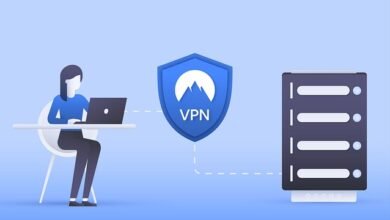What is the kernel and what does it do?

What is the kernel and what does it do?
If you use computers, you must have heard the name Kernel. But do you know what Kernel is ? Where is it needed? If not, then at the end of today’s article you will learn about all things Kernel related. Stay with us for full details.
This kernel is a very important center of the computer operating system (OS). It is a kernel that provides all the essential services for different parts of the operating system. This is the main layer between the operating system and hardware, helping to handle and manage memory, file systems, device control, as well as networks.
The kernel is most often compared to the shell, which is actually the external part of the operating system that interacts with user commands. Kernel and shell are terms that are frequently used in Unix operating systems, in terms of the IBM mainframe or Microsoft Windows systems.
Whereas, do not confuse the kernel with the basic input/output system (BIOS), it is an independent program that is stored on a chip in a computer circuit board.
That’s why today I thought why not give you complete information about what a kernel is and how it works. With this you can get acquainted with a part of this basic computer C. So let’s get started without delay.
What is Kernel
The operating system provides us with a graphical interface so that we can give commands to the computer system. But the system cannot understand these commands directly.
So the code is compiled in a binary language, where the core component of the operating system is used, and it is called Kernel .
We deal with the lowest layer of the User Kernel and then the kernel deals with the system.
Kernel plays the role of mediator between system hardware and software. This kernel is not an operating system (OS); It is a central unit of the operating system. This is the first program that is loaded into the protected memory area during the boot process. It is kept in that memory for as long as the system is running.
This kernel is a low-level abstraction layer. The user process uses a system to interact with the system. The system calls the kernel, then the kernel executes the user process.
Kernel simultaneously manages other system processes such as process management, memory management, device management, and I/O management.
What does the kernel do?
As I said earlier, the kernel is the basic component of an operating system. It acts as a bridge between applications and processes data using connections between processes and system calls, which are made at the hardware level.
When the operating system is loaded into memory , the kernel is loaded first and remains in memory until the operating system shuts down again. This kernel is responsible for all the low-level tasks such as disk management, task management, and memory management.
In general, a computer kernel interfaces to the three major computer hardware components, and also provides services for the application/user interface, CPU, memory, and other input/output devices.
Besides providing this kernel, it also manages computer resources, so it can allow other programs to run and use these resources.
With this, the kernel prepares the memory address space for applications, loads files from application code into memory, sets up the execution stack for programs and branch with them to specific locations for execution within programs.
What are the features of the Kernel?
Let’s get acquainted with the features of the kernel.
What are the responsibilities of a Kernel?
Now let’s learn about Kernel responsibilities.
1. CPU : This same core is responsible for the number of running programs that must be allocated to the processors at any given time.
2. RAM : RAM is used to store both program instructions and data. While many programs often want to access this memory, they want more memory which is more than the memory available in the computer.
In such a case, it is the Kernel’s responsibility to allocate the memory it will use, along with it to decide what to do when there is not enough memory available.
3. I/O devices : These cores allocate requests from different applications so that I/O operations can be done in the correct device, in addition they also provide convenient ways to use the device.
4. Memory management : This kernel has full access to the system memory and also allows it to be accessed safely when you need it.
5. Device management : Kernel should keep a list of all available devices. This menu is already configured by the user or detected by the operating system at run time (usually called Plug and Play).
What features does Kernel provide?
Now let’s find out what features the kernel provides.
1) process scheduling (dispatch)
2) inter-
process communication 3) process synchronization
4) context switch
5) process control blocks manipulation
6) interrupt handling
7) process creation destroy
8) process suspension resume
definition of kernel
The operating system’s job manager is the kernel. It controls and manages all the basic functions of the operating system.
Memory management : Kernel provides virtual and physical memory for processes to complete their execution. If the process is unable to finish in physical memory, the kernel also provides virtual space in the hard disk so that it can store the process there.
This concept is called virtual mapping. When a program needs data that is not currently in RAM, the CPU points to the kernel for the data and then the kernel also responds to the CPU, writing its contents to an inactive memory block. in the possible disk (a space created for this purpose according to the data requirements) and then also replaced with the data requested by the program. This scheme is called demand relay.
Scheduler : This kernel acts as a scheduler while operations are being executed. One operation at a time is performed by the processor. This kernel allocates the processor to a program from the list of running applications.
Device Management : Kernel controls the activities of other peripheral devices with the help of device drivers. Device drivers are programs that help the operating system to interact with hardware devices.
A device driver provides an interface and helps the operating system to interact with other peripheral devices such as printers, scanners, modems, keyboard, mouse, etc.
This driver translates OS function calls into device-specific calls. Device drivers detect installed devices as well as search engines at system startup.
This process uses the system call mechanism to deal with the operating system kernel. A system call is a service call to the kernel from which it takes permission to perform the operation. There is a system call machine code instruction that the application program uses so that it can obtain service permission from the operating system.
Memory Management: – This kernel also manages RAM. Allocates memory for both instructions and data execution. It decides which process is in RAM and how much memory is required to perform the process? This kernel handles many processes using a different mechanism.
Kernel types
Now let’s get acquainted with the different types or types of kernel.
monolithic nucleus
Monolithic Kernels run all the basic system services like process management, memory, interrupt handling, I/O connections, file system, etc. within the kernel space.
Monolithic cores usually have the highest data transfer rate of all other cores and are therefore used in large servers or servers dedicated to jobs.
monolithic core
1) Being smaller in source and compiler models
2) Less code means fewer bugs and fewer security issues.
3) System calls are used in a monolithic kernel to perform operations
4) Execution is very fast
5) In this all things happen in the kernel itself, so we don’t need any additional I/O and process mechanism during app build to handle.
homogeneous kernel defects
1) Encoding is also very difficult in kernel space, because you can’t use common libraries in it.
2) Debugging in this is difficult, as you have to restart the computer frequently
3) Errors in part of the kernel cause a lot of side effects
4) Kernels often become large and difficult to maintain.
5) Not portable – the monolithic kernel must be rewritten frequently for each new architecture that is used in the OS.
micro kernel
Whereas in a microkernel, the kernel provides the basic functions through which it allows the implementation of separate servers and software. Kernel is divided into separate processes called servers. Here some servers are running in user space and others in kernel space.
All servers are kept separately and run in different address spaces.
You can usually see Microkernels in real time systems .
MicroKernel Advantages
1) It is easier to maintain compared to Monolithic Kernel.
2) It is fail-proof (meaning if one server fails, the other servers are still running efficiently).
3) Portable
4) Small in size
5) Contains a small amount of code. This increases their stability and security.
hybrid kernel
In this the best of both homogeneous kernel and micro kernel are mixed.
Such as speed, simple design of monolithic kernel + modularity and stability of small kernel
It has the qualities of both a homogeneous and a micronucleus, but we cannot say that it is an exclusively specific nucleus.
You can usually see these cores on desktops, Windows, Mac, and Linux operating systems .
nano core
This type of kernel offers only hardware abstraction, there are no services in it, and the space for the kernel is minimal. The nanokernel is the core of the hypervisor with which you can simulate multiple systems via virtualization. Cores are great for compact projects.
Exo-Kernel
This nucleus is the smallest. It only provides process protection and resource processing. The programmer who uses this kernel is responsible for properly accessing the device he wants to use.
The difference between kernel and operating system
OS is a system software package while kernel is the part of the operating system that manages all the processes and devices.
Where the operating system is the interface between the user and the device. Whereas, the kernel is an interface between software and hardware.
Kernel helps the software to communicate with other peripheral devices.
Is Linux a Kernel or an Operating System?
By the way, there is a difference between kernel and OS. As I have already told you that Kernel is the heart of an operating system that manages all its essential features, while if some useful applications and tools are added to that kernel, this complete package is called OS. Is.
From this it can be said that in the operating system there is a kernel space in addition to a user space.
This shows that Linux is a kernel because it does not contain any other applications such as file system tools, window systems, graphical desktops, sysadmin commands, text editors, compilers , etc.
At the same time, many companies add these types of applications to the Linux kernel and set up their own operating systems such as ubuntu, suse, centOS, redHat, etc.
What is kernel panic?
Since the kernel handles most of the basic functions of the computer, so if it crashes, it will damage the entire computer. This unwanted event is called ” kernel panic ” in macOS and Unix systems.
This is similar to the blue screen of death in Windows. To get out of this situation, you have to restart your computer.
Note Kernel panics often arise due to hardware connectivity issues. So, if your computer is showing issues like kernel scare many times, you should disconnect all unnecessary hardware, it may end your problem.
conclusion
I hope you liked my article What is a Kernel (What is a Kernel). I have always been trying to provide complete information about Kernel to my readers so that they don’t have to search any other websites or the internet for the context of this article.
This will also save their time and they will also have all the information in one place. If you have any doubts about this article or if you want there to be some improvement in it, you can write low comments on it.
If you liked this post What is Kernel or learned something, please share this post on social networks like Facebook, Twitter, etc.



